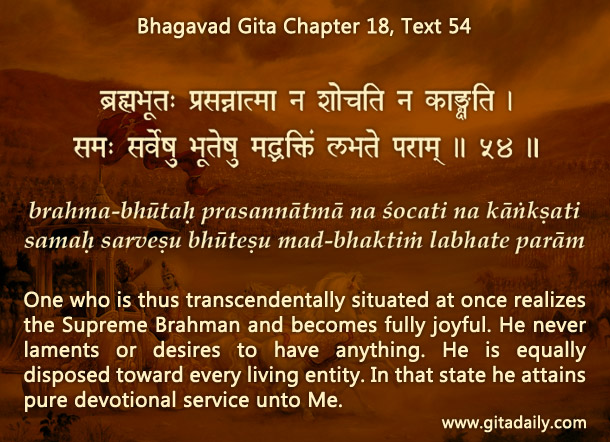The Bhagavad-gita repeatedly urges us to view worldly dualities with equanimity.
Why?
Because our emotional attachments for worldly things bind us.
When our emotions run untethered towards worldly things, our consciousness stays riveted to the material level. To break free, we need to cultivate equanimity towards the things that trigger our emotions.
The more we cultivate equanimity, the more we see material things without getting overwhelmed by fantasies of pleasure or nightmares of misery. Such dispassion helps us to focus our consciousness beyond matter, thus placing us at the doorstep to transcendence. Unfortunately, some spiritualists who are too harried by the agitation of worldly emotions feel so relieved at being freed from such emotions that they presume emotions-less peace and activity-less silence to be the highest spiritual perfection.
Gita wisdom protects us from such shortsightedness by unequivocally stating in the very verse which describes equanimity (18.54) that such non-duality is the threshold to transcendental devotion (para-bhakti). In the arena of transcendental devotion, our emotions grow to their fullest potential in our loving relationship with Krishna. With equanimity freeing us from the worldly desires that distract us from him, our emotions rush forcefully towards him as we realize and relish his all-attractiveness.
Significantly, bhakti-yoga offers us the opportunity to spiritualize our emotions even while we are still within the reach of worldly emotions. The Gita (18.56) asserts that whatever be our disposition and occupation, we can all catapult ourselves to transcendence if we take shelter of Krishna.
By determinedly cultivating remembrance of Krishna and fanning whatever sparks of attraction for him that we presently have, we can start relishing the sweetness of devotion. This taste is so fulfilling that it grants equanimity towards worldly things as a byproduct and energizes us to march towards Krishna’s world of eternal ecstasy.


Leave A Comment